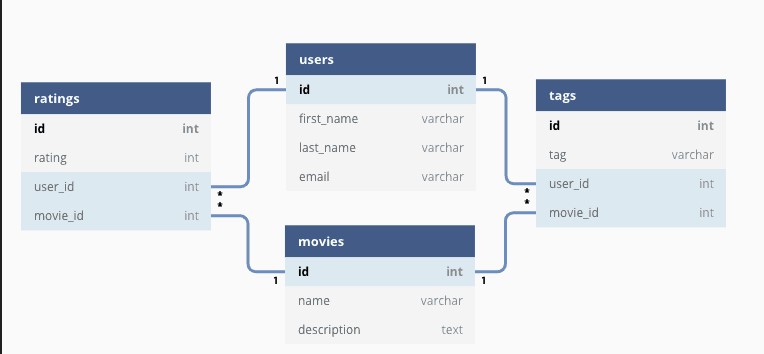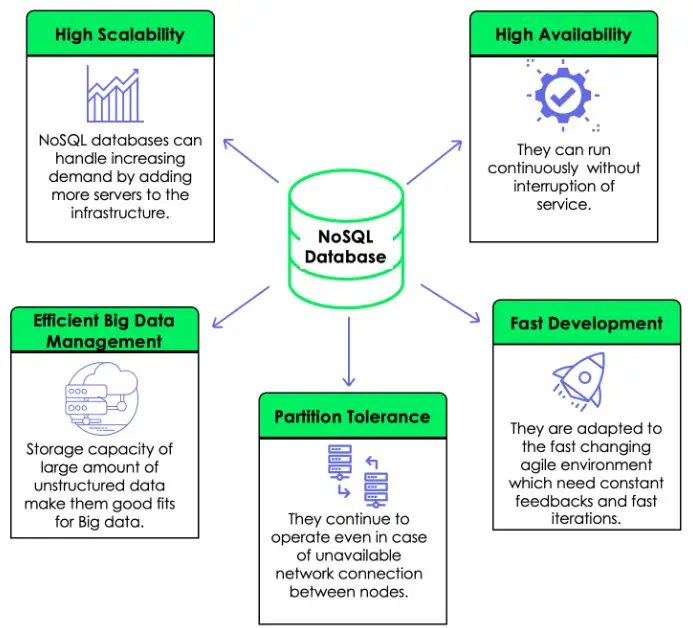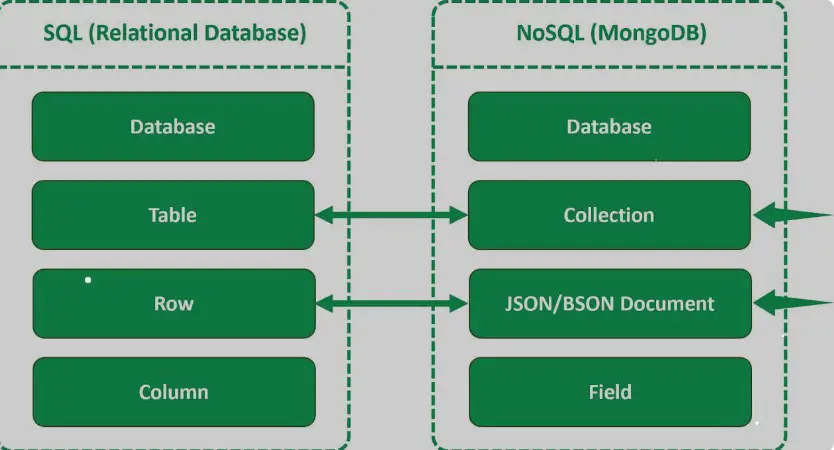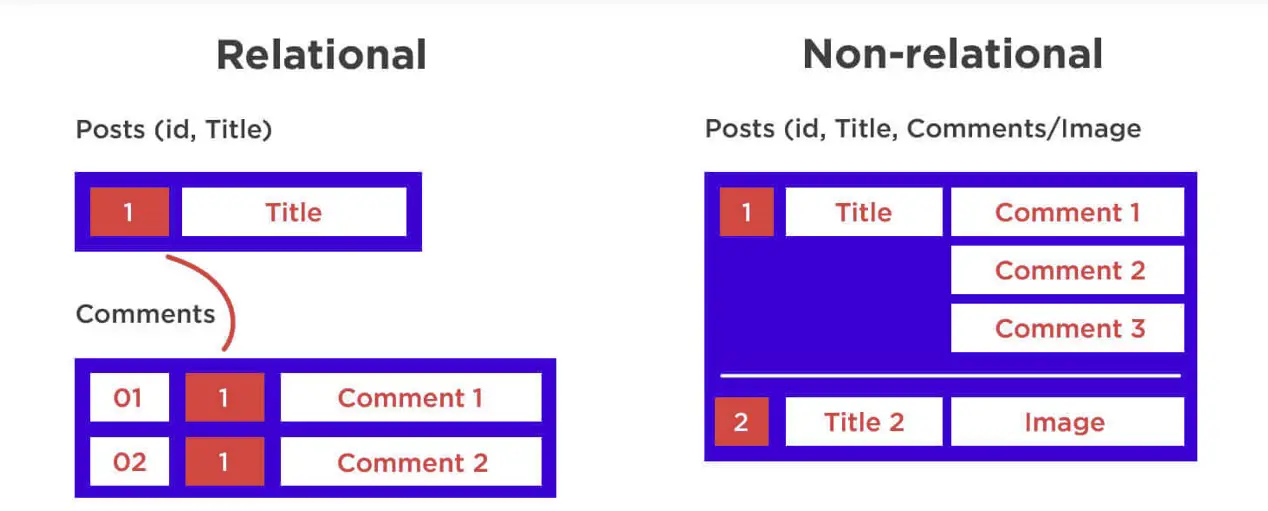Databases are the backbone of modern computing, essential for storing, retrieving, managing, and analyzing data. They come in various forms, each with unique characteristics suited to different applications. At the core of this diversity are two primary types: relational and non-relational databases. These two paradigms offer fundamentally different approaches to data management, impacting everything from application development to how information is stored and accessed.
The difference between relational and non-relational databases lies in how they store and manage data. Relational databases, also known as SQL databases, store data in tables and rows, emphasizing structured data and relationships between entities. Non-relational databases, or NoSQL databases, offer a more flexible data model, including document, key-value, wide-column, and graph formats, catering to unstructured or semi-structured data.
This distinction is crucial in the era of big data and cloud computing. Relational databases are celebrated for their robust transactional integrity and structured query language (SQL), making them ideal for complex queries and transactional applications. Non-relational databases shine in scalability, performance, and the ability to handle vast amounts of diverse data, making them a go-to for web applications, real-time analytics, and big data applications. Understanding these differences helps in selecting the appropriate database for specific project requirements, ensuring efficiency, scalability, and performance.

Relational Databases
Overview
Relational databases have been the backbone of data management systems since their inception in the 1970s. Pioneered by Edgar F. Codd at IBM, they introduced a structured approach to data storage and retrieval through the use of tables. This method not only streamlined data management but also enforced relationships among different data types, facilitating complex data queries and analysis. The essence of relational databases lies in their ability to store data in predefined schemas, making them an ideal choice for applications where the integrity and reliability of data are paramount.
Key Features
Tables
At the heart of relational databases are tables. Each table is designed to hold data about a specific type of item, and it’s comprised of columns and rows. Columns represent the attributes of the item, while rows represent the actual data records. This structure enables a clear and organized way to store data, enhancing both data retrieval speed and accuracy.
Schemas
Schemas define the structure of the database. They outline the tables, fields, relationships, views, and indexes. A schema acts as a blueprint for how data is organized within the database, ensuring consistency and integrity across all data types and tables.
SQL
Structured Query Language (SQL) is the standard language for interacting with relational databases. It allows for the creation, manipulation, and querying of data in a straightforward and powerful manner. SQL’s widespread adoption is a testament to its effectiveness in handling complex data structures.
ACID Properties
Relational databases are renowned for their ACID properties: Atomicity, Consistency, Isolation, and Durability. These principles ensure that transactions are processed reliably, even in the event of system failures or errors. The adherence to ACID properties guarantees the integrity and reliability of data within a database.
Use Cases
Relational databases excel in environments where transactional data and complex queries are prevalent. They are particularly suited for:
- Banking systems, where the accuracy and reliability of transaction data are crucial.
- Inventory management systems, which require consistent and organized data storage for items.
- Healthcare systems, where patient records need to be stored in a structured and reliable format.
Non-Relational Databases
Overview
Non-relational databases, also known as NoSQL databases, emerged as a solution to the limitations of relational databases, particularly in handling large volumes of unstructured data and scalability. Unlike their relational counterparts, non-relational databases do not require a fixed schema, allowing for greater flexibility in storing and managing data. This adaptability makes them well-suited for applications involving big data, real-time analytics, and mobile apps, where the data structure can vary and evolve over time.
Types
Document Databases
Document databases store data in document-like structures (JSON, BSON, etc.). They are ideal for content management systems and e-commerce applications, where each document can vary in size and content structure.
Key-Value Databases
These databases store data as key-value pairs, making them highly efficient for applications that require speedy lookups, such as caching systems and session storage solutions.
Wide-Column Stores
Wide-column stores use a columnar storage architecture, enabling them to efficiently query large datasets. They are well-suited for analyzing big data and real-time analytics.
Graph Databases
Graph databases are designed to store data in terms of entities and relationships. They excel in applications that require complex relational queries, such as social networks and recommendation systems.
Key Features
Schema-less Models
The flexibility of non-relational databases comes from their schema-less data model, allowing for the storage of unstructured and semi-structured data. This adaptability facilitates rapid development and iteration of applications.
Scalability
Non-relational databases are designed to scale horizontally, making them capable of handling massive volumes of data across many servers without compromising performance.
CAP Theorem
The CAP theorem outlines the trade-offs among consistency, availability, and partition tolerance in distributed systems. Non-relational databases often prioritize availability and partition tolerance, making them suitable for distributed applications where uptime is critical.
Use Cases
Non-relational databases shine in scenarios involving big data and real-time analytics. Their flexibility and scalability make them ideal for:
- Social media platforms, which deal with vast amounts of unstructured data.
- IoT applications, where data from sensors and devices varies significantly.
- Real-time analytics platforms, requiring the fast processing of large datasets.

Comparing Relational and Non-Relational
Data Structure
The primary difference between relational and non-relational databases lies in their data structure. Relational databases use a structured data model, organizing data into tables with rows and columns. This structure necessitates a predefined schema, dictating the format and relationships of the data stored. It’s ideal for applications where data integrity and relationships are crucial.
Non-relational databases, on the other hand, offer a more flexible data model. They do not require a fixed schema, allowing for the storage of unstructured or semi-structured data. This flexibility is particularly advantageous for applications dealing with varied and evolving data types, such as social media content, sensor data in IoT applications, or any scenario where the data structure can change over time.
Scalability
Scalability is another critical area of distinction. Relational databases traditionally scale vertically, meaning that to handle more load, a more powerful server (with a faster CPU, more RAM, or increased storage) is required. This approach can become costly and has physical limits.
Non-relational databases, conversely, are designed to scale horizontally. This means they can distribute the load across multiple servers or nodes. This approach not only allows for handling larger volumes of data but also provides more flexibility and cost-effectiveness in scaling.
Performance
When it comes to performance, the choice between relational and non-relational databases often depends on the specific use case. Relational databases are optimized for complex queries and transactions involving relationships between data points. They excel in environments where data integrity and consistency are paramount.
Non-relational databases are typically faster when dealing with large volumes of data that do not require complex relationships. Their performance is particularly notable in read-heavy scenarios and real-time applications where response time is critical.
Transaction Support
Transaction support is a stronghold of relational databases. They follow the ACID (Atomicity, Consistency, Isolation, Durability) model, ensuring that all transactions are processed reliably and securely. This makes them suitable for financial applications, e-commerce platforms, and any system where transaction integrity is crucial.
Non-relational databases, while offering some level of transaction support, especially in recent advancements, tend to prioritize availability and partition tolerance (as per the CAP theorem) over strict consistency. This trade-off is acceptable and even preferred in many modern applications, such as social networks or big data analytics, where absolute consistency is not as critical.
Complexity and Learning Curve
The complexity and learning curve associated with each type of database vary significantly. Relational databases, with their mature ecosystem and standardized query language (SQL), offer a wealth of resources for learning and development. However, designing and maintaining a relational database schema can be complex, particularly as applications scale.
Non-relational databases, while potentially simpler to set up and more flexible, come with their own set of challenges. The lack of a standardized query language (each type of non-relational database may use a different approach) and the need to manage data consistency in a distributed system can introduce a steep learning curve.
Choosing Between Relational and Non-Relational
Factors to Consider
Selecting the right database involves considering several factors, including:
- Data consistency: Is transactional integrity crucial for your application?
- Scale: Do you expect to handle massive volumes of data or require the ability to scale rapidly?
- Complexity: What level of complexity in data relationships and queries does your application entail?
Hybrid Approaches
In many cases, a hybrid approach that utilizes both relational and non-relational databases can be advantageous. This strategy allows for leveraging the strengths of each database type according to different needs within the same application. For example, a relational database could manage transactional data, while a non-relational database handles user-generated content and logs.
Future Trends
Looking ahead, the landscape of database technologies continues to evolve. Emerging trends include:
- Automation in database management, reducing the complexity of scaling and maintenance.
- Serverless databases that offer even more flexibility and cost-efficiency.
- Integration of artificial intelligence and machine learning for smarter data handling and analysis.
As these technologies develop, the line between relational and non-relational databases may blur, leading to more versatile and powerful database solutions.

Frequently Asked Questions
What is a relational database?
A relational database is a type of database that stores and provides access to data points that are related to one another. It uses a structured query language (SQL) for database management and operations. Its architecture is based on a table-based format, with data organized into rows and columns. Each row represents a unique record, and each column represents a field within the record. This structure allows for complex queries and transactions, making relational databases ideal for applications requiring strict data integrity and relationships between the data entities.
How does a non-relational database work?
Non-relational databases, also known as NoSQL databases, work by storing data in formats other than the tabular relations used in relational databases. These formats can include document, key-value, wide-column, and graph databases, each designed to handle specific types of data and access patterns efficiently. Non-relational databases are schema-less, meaning they don’t require a fixed schema before data storage. This flexibility allows for the storage of unstructured or semi-structured data, making them well-suited for big data and real-time web applications.
Why choose a non-relational database over a relational database?
Choosing a non-relational database over a relational database often comes down to the specific needs of the application. Non-relational databases are typically chosen for their scalability, flexibility to handle large volumes of unstructured or semi-structured data, and their ability to facilitate rapid development and deployment of applications. They are particularly well-suited for scenarios where the data model may evolve over time, or where the application demands high throughput and low-latency access to data across distributed systems.
Can relational and non-relational databases be used together?
Yes, relational and non-relational databases can be used together in a hybrid approach. This strategy leverages the strengths of both types of databases to meet complex application requirements. For instance, a relational database can manage transactional data with strict consistency needs, while a non-relational database handles unstructured data or real-time analytics. Using them together can offer a balanced solution for applications requiring structured data integrity as well as flexibility and scalability.
Conclusion
Choosing between relational and non-relational databases is a decision that can significantly impact the performance, scalability, and overall success of an application. Relational databases offer the advantages of a structured query language and strong transactional integrity, making them suitable for applications requiring complex queries and reliable data consistency. On the other hand, non-relational databases provide flexibility, scalability, and the ability to handle large volumes of diverse data, catering to the needs of modern web applications and big data analytics.
Ultimately, the choice between these database types depends on the specific requirements of the project, including the nature of the data, the expected scale, and the application’s performance needs. Understanding the distinct features and benefits of each type of database can guide developers and businesses towards making informed decisions that align with their goals, ensuring efficient data management and application performance in the digital age.

